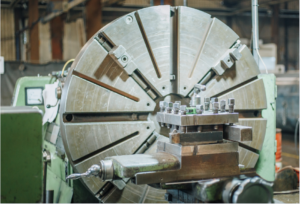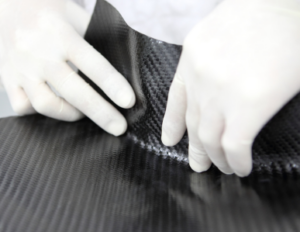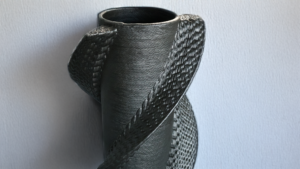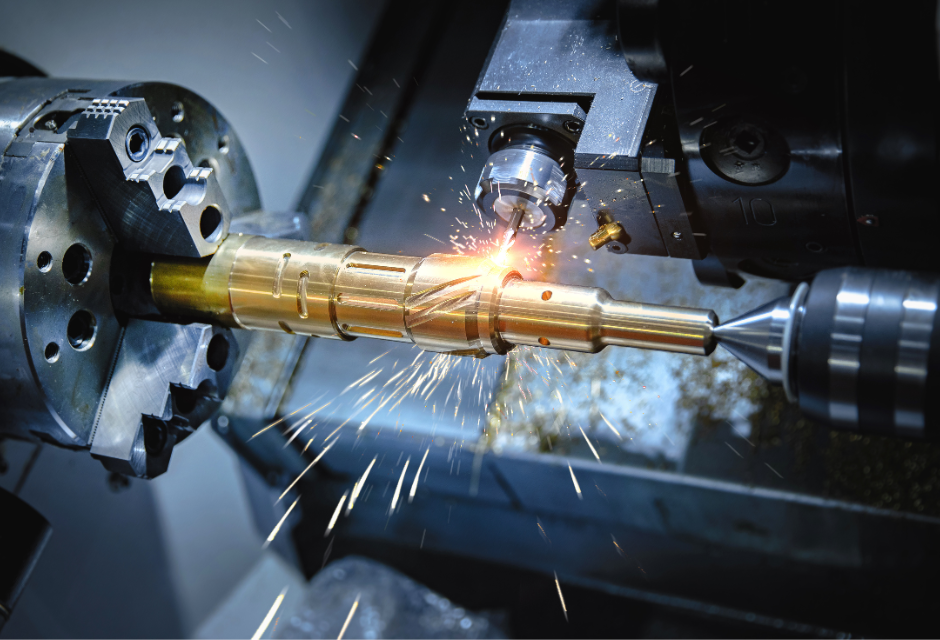
CNC machine tools" and "laser cutting machines" are the methods used to cut materials.
However, many people may be wondering what the difference is and which is more suitable for their products.
Choosing without fully understanding the features may result in unexpected costs.
In this article, we will explain in detail the difference between "CNC machine tools" and "laser cutting machines. Please refer to this article to determine the best technology for your products.
For more information about Taiga, click here.Table of Contents
What is CNC Machine Tools?
CNC stands for "Computer Numerical Control" or "Computerized Numerical Control" and is a technology that uses computers to numerically control the movement of machines.
CNC machine tools utilizing this technology can cut metals and other materials with high precision.
In particular, a technology called "5-axis CNC machining" can process complex shapes in a single operation, and is useful in fields where precision is required, such as the automotive and aerospace industries.
Here, we will explain in detail how CNC machine tools work and their features.
How CNC Machine Tools Work
The following is an introduction to the process flow when machining with CNC machine tools.
- Create CAD data
- Create CAM program data
- Set up the necessary tools
- Computer Operated Tools
CAD (Computer Aided Design) is a tool to create a blueprint of a part on a computer. It clarifies the shape and dimensions of the part to be machined.
CAM (Computer Aided Manufacturing) uses the designed CAD data to create the NC (numerical control) program required for machining. This program includes the tools to be used and the machining sequence.
The computer then moves the tool millimeter by millimeter according to the program. The tool performs rotational and linear movements to cut or drill holes in the material.
Main features of CNC machine tools
Machining accuracy and efficiency are the key features of CNC machine tools. Computer-controlled machines can produce complex shapes in a short time with minimal error.
The 5-axis machine, in particular, has three linear axes (X, Y, and Z) plus a rotary axis and an inclined axis, and can perform machining from multiple directions in a single setup, which is an advantage that greatly improves work efficiency.
In some cases, unmanned operation is possible once a program is created, and continuous operation for long periods of time can be expected. This is especially advantageous in mass production, as it improves productivity and reduces labor and manufacturing costs.
Machining examples of CNC machine tools
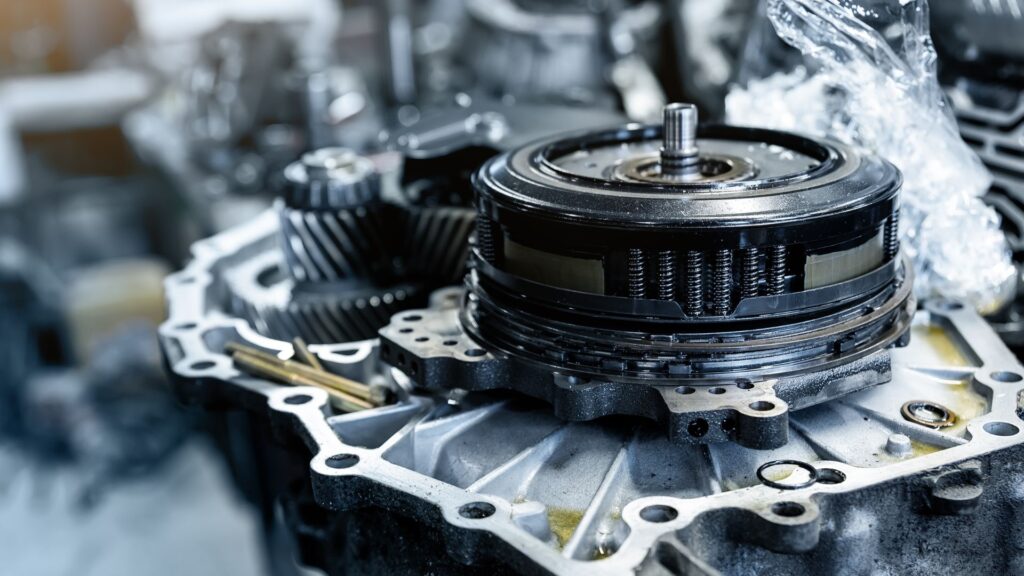
CNC machine tools are used in a wide variety of industries to manufacture a wide range of products. Typical examples of machining are listed below.
- Automotive Parts
- Aerospace parts
- Robot parts
- Medical device parts
For example, metal parts such as automobile engines, drive shafts, and wheels are generally machined on CNC machine tools.
Types of CNC Machine Tools
CNC machine tools are a generic term for "machines that perform machining automatically based on a program," and there are many different types. The following is a list of some of the most common types.
CNC Milling Machine
A CNC milling machine is a machine that uses a rotating tool (milling machine) to cut materials. It is particularly good at machining flat surfaces and grooves, and is used to create basic shapes for parts.
CNC Lathe
CNC lathe" is a type of machine tool that processes materials while rotating them. It excels at manufacturing cylindrical parts and is suitable for drilling, boring, and punching.
CNC Machining Center
CNC machining centers" are machine tools that integrate multiple functions such as milling and turning into a single machine.
The automatic tool change system greatly reduces the time required for setup changes. Production efficiency is extremely high, and even complex shapes can be finished in a short time.
What is a laser processing machine?
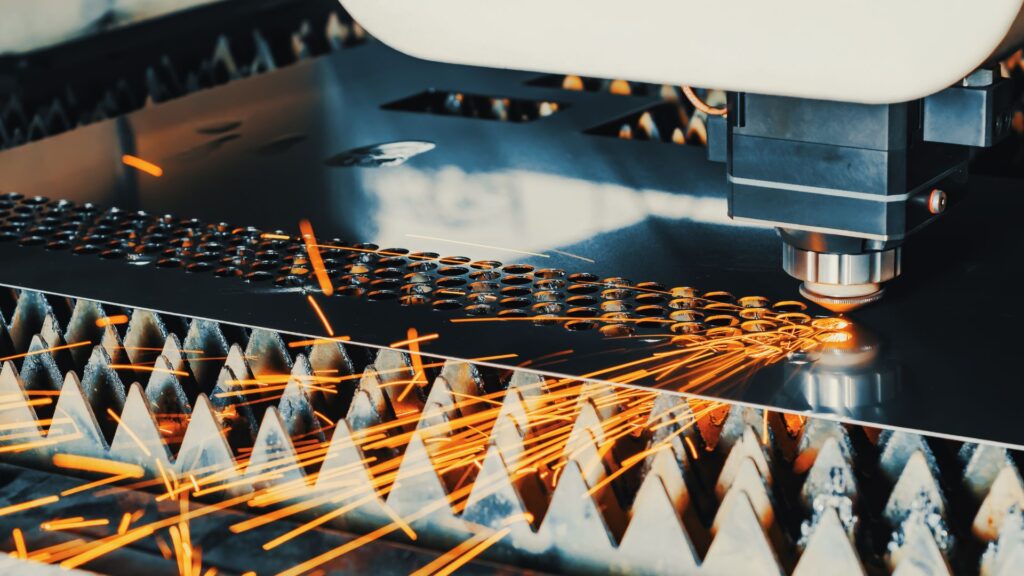
A laser machine is a machine that uses laser light to process materials. Unlike other machining processes, the main feature of laser processing machines is that they can cut, weld, engrave, etc. without the tool coming into direct contact with the material.
Because detailed designs can be easily realized, this technology is used in a wide range of fields, from the manufacture of industrial parts to jewelry.
From here, the features of laser processing machines will be explained in detail.
How Laser Processing Machines Work
Laser processing machines work by focusing a high-density laser beam on a material to cut or drill holes. The basic flow is as follows
- Laser light is generated by an oscillator.
- Lens to collect light
- Irradiate the material from the laser head
It hits the material as a dense beam and melts or evaporates. Therefore, it can therefore be used for materials such as rubber and fabrics that are too soft to be processed with a blade.
Main features of laser processing machines
A major feature of laser processing machines is their ability to perform non-contact processing.
Since the tool never touches the material, burrs and chips that tend to occur with conventional processing methods can be minimized. In addition, since the laser beam is irradiated onto the material with extremely high precision, the effect of heat is limited to localized areas, preventing deformation and cracking of the material.
Furthermore, laser processing machines do not utilize physical tools such as knives or grinders, so tools do not need to be replaced. Although some cleaning and adjustment is required, parts replacement is less frequent, greatly reducing maintenance efforts. This will maximize uptime and improve production efficiency.
Laser processing machine processing example
In addition to cutting and drilling, laser processing machines are capable of a wide variety of processing, including welding, marking (engraving), and engraving. A wide range of materials can be processed, including not only metals, but also ceramics, plastics, wood, fabrics, and glass.
For example, "engraving complex designs and letters on cowhide" and "engraving logos on acrylic plates" are characterized by a very high degree of flexibility in processing.
Laser processing machines are a technology that is being looked at to meet a wide range of needs, from the manufacture of precision parts for industry to creative fields such as fashion and advertising.
Types of laser processing machines
Laser processing machines are classified into three main categories depending on the type of laser used.
CO2 Laser
The most commonly used is the CO2 (carbon dioxide) laser.
It amplifies light using carbon dioxide as a medium, producing long wavelengths and high output power. It is also good at processing glass and PET bottles, which is difficult with other lasers.
fiber laser
Fiber lasers amplify light through a special optical fiber. It can be used for a wide range of materials, but is especially used for printing and engraving on metal materials.
UV Laser
UV lasers are characterized by their short wavelength and high energy density. It can process not only metals but also very hard materials such as diamonds, sapphires, and rubies.
It is also particularly effective in applications that require a delicate finish due to its low thermal damage.
Difference between CNC machine tools and laser cutting machines
We have explained the features of CNC machine tools and laser cutting machines, but many people may feel that they do not know which one to choose in the end.
Please refer to the following brief summary of the differences between them.
Principle of Operation
CNC machine tools perform machining by moving tools based on numerical data. They can maintain uniform quality even for complex curves and cutting operations that are difficult to perform by human hands.
Laser cutting machines, on the other hand, process by emitting laser beams. Because they apply high-density energy with pinpoint accuracy, they can drill and engrave holes in places that CNC machine tools cannot reach.
Materials that can be processed
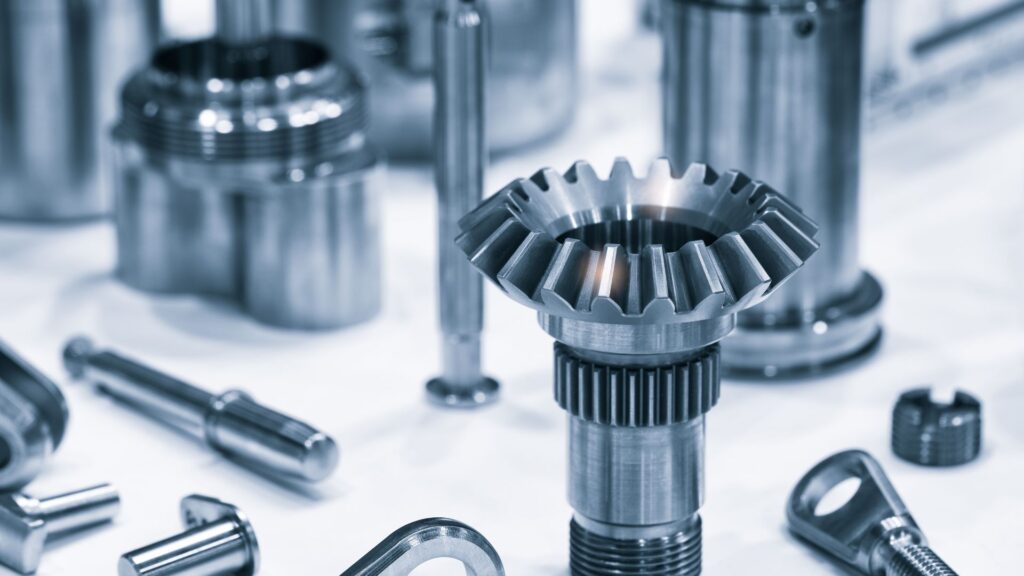
CNC machine tools are mainly intended for hard materials such as metals (aluminum, stainless steel, copper, and iron). They are used to produce parts that are machined with high precision and durability.
Laser cutting machines can be used not only for metals, but also for a wide range of other materials, including
- ceramic
- Resins, plastics
- wood
- cloth
- rubber
- glass
For example, with soft materials, CNC machine tools will cause dimensional changes due to contact with the tool. Laser cutting machines, on the other hand, process without contact, so there are no problems.
Coverage
The type of machine used and the size of the tools used determine the range of CNC machine tools that can be used for machining. In general, they can handle diameters from 10 mm to 60 mm, and are suitable for manufacturing metal parts such as automobile and aircraft components.
Laser cutting machines use an ultra-fine beam to perform processing, so even extremely small sizes, such as 0.15 mm in diameter, may be handled. Very small parts and delicate designs can also be handled.
maintenance
Because CNC machine tools process materials by directly applying tools to them, tools are prone to wear and need to be replaced periodically. Regular maintenance is also essential, such as replenishing lubricants and cleaning the inside of the machine. This may result in temporary machine stoppages, which can affect delivery times.
Laser cutting machines, on the other hand, do not involve physical contact, so there is no wear of tools or parts and no need for replacement work. Although some cleaning and adjustment is required, they require less maintenance and are more efficient in operation than CNC machine tools.
Summary
This article details the features of CNC machine tools and laser cutting machines.
CNC machine tools are suited for processing metals and are used in the automotive and aerospace industries, where high precision and durability are required. Laser cutting machines, on the other hand, can handle a wide range of materials and are suited for products that require design and fine processing.
The important thing is to understand the characteristics of each and choose the processing method that best suits your product. However, there are many cases where you may not know which one is suitable for your product.
At "Taiga," our experienced engineers propose optimal designs and processing methods. We are also available for prototyping and research using the materials we have developed, and are ready to meet diverse needs. There is no charge for using this service, so please take advantage of it.
For more information about Taiga, click here.
 0120-987-742
0120-987-742